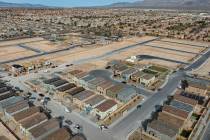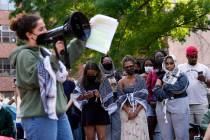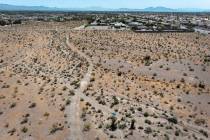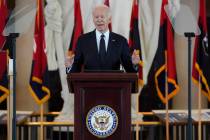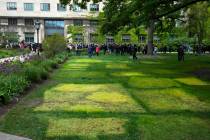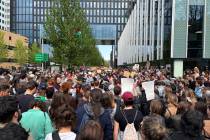Professor agonizes as BP oil spill goes from bad to disastrous
The BP oil spill continues to spread across the Gulf of Mexico, but outside the region, it no longer covers the front pages of newspapers each morning.
Americans no doubt remain sickened at the thought of the worst oil spill in the nation's history boiling up as much as 2.5 million gallons of oil day after day while the so-called experts act like Keystone Kops.
Unlike others frustrated by the lack of good news from the disaster zone, UNLV Associate Professor of Physics Michael Pravica has an educated understanding of the scientific pressures at work on the busted well 5,000 feet beneath the surface. Pravica is a member of the High Pressure Engineering Center at the university.
Several weeks ago, Pravica began to suspect BP officials were more concerned about their investment in the well than in stopping a leak that could ruin regional ecosystems for decades to come. He thought their idea of inserting a tube inside the well to siphon off oil showed a distinct lack of understanding of the immense pressure present.
When he saw no improvement after more than 40 days, he became alarmed.
"I was concerned initially, but I thought they were getting the best minds on this," he says. "The more I delved into it, I wondered, 'Is there really someone who knows what they're doing?' "
Although officials seemed surprised when ice crystals formed on the wellhead, Pravica said it was to be expected given the presence of methane in the mix. When he learned from "60 Minutes" that the concerns of BP engineers were overruled by corporate management, he became even more concerned.
"There are a lot of people with MBAs who have not a clue about the science and technology that is behind their company," he says.
Frustration led Pravica to produce a pair of YouTube videos explaining challenges brought on by the pressures present at such depths. He also called for a free flow of factual information from BP and the federal government so Americans might add their own ingenuity to the efforts.
We can learn something from the response to Pravica's educated plea.
First, he says, reporters picked up on his questioning of BP's motives as the petroleum giant flailed and failed to accurately measure the scope of the April 20 spill that followed the Deepwater Horizon rig explosion.
Then he says he was contacted by Sen. Harry Reid's office and received a form correspondence directing him to the official spill website, deep
waterhorizonresponse.com. The site was no help.
"It's a one-directional thing, a black hole," Pravica says. He wanted factual information he could use to improve the accuracy of his calculations.
An official with U.S. Rep. Dina Titus' office contacted Pravica and set up a phone conference between the professor and a Department of Energy official. Pravica learned of surface cracks and that the well wasn't finished when it blew out.
He also learned about the plan to drill side wells to relieve pressure in the main well. Pravica suggested placing large concrete slabs -- "a parking lot" -- several feet thick over the well and surrounding area.
A short time later a representative of Rep. Shelley Berkley's office contacted Pravica. In all, three members of Nevada's delegation reached out.
Although he readily admits "I'm a physicist, not an oil well driller," Pravica remains adamant that traditional efforts to cap the well will fail, likening it to "playing tiddlywinks" with the blowout preventer.
Distressed people from throughout the gulf region have contacted Pravica to express their sadness and frustration. Although the professor hopes for the best, he fears high pressure will speed erosion and endanger the entire well area.
It will take the nation's best minds to help solve this problem. We must start listening to them.
John L. Smith's column appears Sunday, Tuesday, Wednesday and Friday. E-mail him at Smith@reviewjournal.com or call (702) 383-0295. He also blogs at lvrj.com/blogs/smith.









